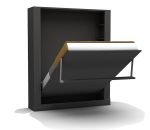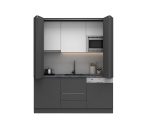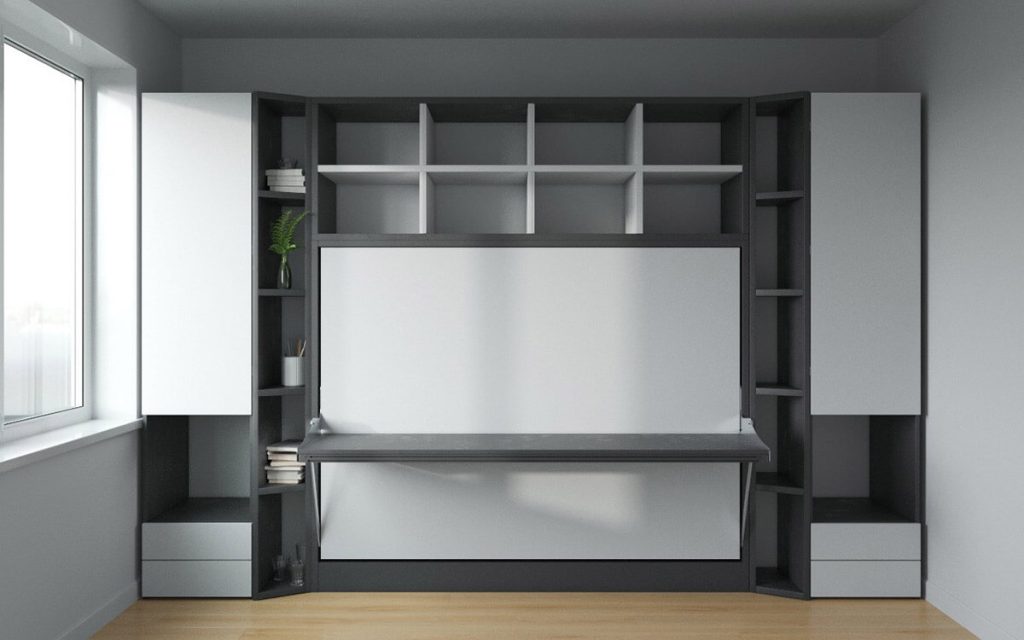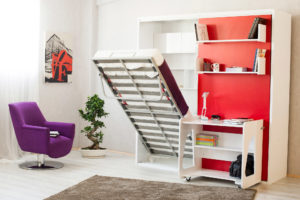Murphy Bed Mechanism
Murphy Bed Mechanism
A Murphy bed, also known as a wall bed or pull-down bed, is a versatile and ingenious space-saving solution that has been a staple in interior design for decades. The key to its functionality lies in the Murphy bed mechanism, a carefully engineered system that allows the bed to be easily folded up and concealed when not in use.
At the heart of the Murphy bed mechanism is the use of a spring or piston system. This system serves a dual purpose: it assists in lifting the bed effortlessly and ensures a controlled descent when lowering it back into the concealed position. The inclusion of tensioned springs or gas pistons is a fundamental aspect of the design, providing the necessary counterbalance to offset the weight of the bed. This ingenious use of mechanics allows the Murphy bed to be manipulated with minimal effort, making it a practical and user-friendly piece of furniture.
The counterbalance system is a critical component, as it plays a pivotal role in maintaining the stability of the bed in both the upright and horizontal positions. When the Murphy bed is folded against the wall, the counterbalance system is configured to evenly distribute the weight, preventing any tilting or instability. This ensures not only ease of use but also safety, eliminating the risk of the bed unexpectedly descending or causing accidents.
In addition to the spring or piston mechanism, the geometry and leverage of the Murphy bed contribute significantly to its seamless operation. The design is carefully calculated to create a balanced and controlled movement, allowing the bed to transition smoothly between its vertical and horizontal positions. This thoughtful engineering ensures that the bed can be raised and lowered effortlessly, providing a practical solution for maximizing space in various living environments.
Safety is a paramount consideration in Murphy bed mechanisms, and to address this, a locking mechanism is typically integrated. This locking system ensures that the bed remains securely in the upright position when not in use, preventing accidental unfolding and offering peace of mind to users. The locking mechanism adds an extra layer of security, making the Murphy bed a reliable and practical choice for households with children or pets.
Some Murphy bed designs include additional features, such as fold-down legs or supplementary support mechanisms. These elements contribute to the overall stability of the bed when it is in the horizontal position for sleeping. By distributing the weight effectively and providing adequate support, these features enhance the comfort and safety of the Murphy bed, ensuring a restful night’s sleep.
Murphy bed mechanisms are available in various forms, ranging from DIY kits for home enthusiasts to professionally installed systems. DIY kits offer individuals the opportunity to build their own Murphy bed, customizing it to suit their specific space and design preferences. On the other hand, professional installation services provide a convenient and efficient way to incorporate a Murphy bed into a space, complete with a well-engineered mechanism that meets safety standards.
Materials used in Murphy bed mechanisms are typically of high quality to ensure durability and longevity. Steel is a common choice due to its strength and resilience, contributing to the robustness of the overall system. This attention to materials underscores the commitment to creating a reliable and enduring piece of furniture.
In conclusion, the Murphy bed mechanism is a sophisticated combination of engineering principles, including spring or piston systems, counterbalance mechanisms, geometry, and leverage. This careful integration of components results in a space-saving solution that is not only practical and functional but also safe and reliable. Whether as a DIY project or a professionally installed piece of furniture, the Murphy bed continues to be a timeless and efficient solution for optimizing living spaces.













